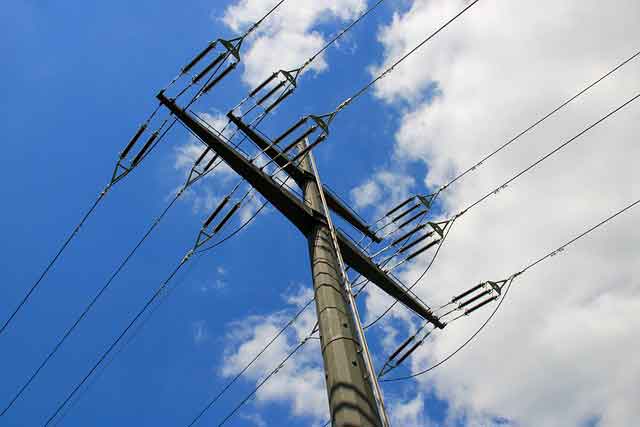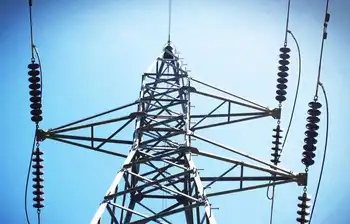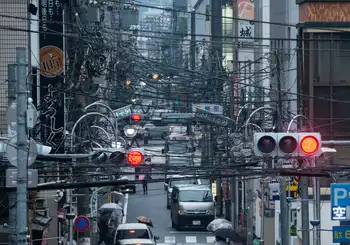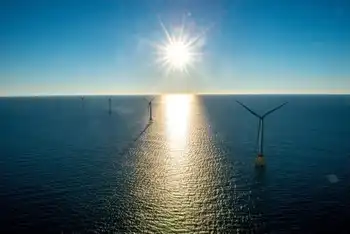Nuclear power taking hits in Canada
- Canadian natural gas prices jumped on speculation nuclear power will fall out of favour as a safe way of generating electricity in the wake of Japan's nuclear crisis.
Export prices at trading hubs that clear Canadian gas exports into the U.S. were up around five per cent, according to the Natural Gas Exchange website, while North American spot prices climbed above $4 US per million British thermal units in New York before falling back to $3.91, up about three cents on the day.
European gas prices shot up even further amid speculation that Japan would increase imports of liquefied natural gas LNG to make up for the loss of nuclear reactors damaged in the 9.0 earthquake. Japan was already the world's largest LNG importer, consuming about 35 per cent of the world's supplies.
Canadian experts said the unfolding disaster combined with low natural gas prices all but spells the deathknell for nuclear power in Canada.
According to Tom Adams, an electricity expert and consultant based in Ontario, the economics of nuclear power were already challenged by abundant shale gas supplies. After the incidents in Japan, Adams predicted there will be no new nuclear reactors built in Canada, including a proposed facility in Alberta, and in fact attention might shift to retiring Canada's nuclear fleet as quickly as possible.
"The future of nuclear power is highly questionable," he said in an interview. "All those questions about reactor safety are back on the table."
According to Adams, the Japanese nuclear industry was considered to be the world's "gold standard" and the recent incidents will convince many that there is no safe way to operate a nuclear reactor.
"This is not like Chernobyl, where you had a bunch of drunken commies doing a bunch of things that were obviously stupid. This is a fall from grace from the top of the top, the best of the best," he said.
Bruce Power, a joint venture between Calgary-based TransCanada Corp., Saskatchewan's Cameco Corp. and a coalition of Ontario pension funds and labour unions, will likely be forced to rethink plans for a reactor in the Peace River region of northern Alberta, CEO Duncan Hawthorne told the CBC.
A statement on the company's website maintained that its existing units are safe.
"Like all Canadian nuclear facilities, the Bruce A and B generating stations have been designed to withstand potential earthquakes and to ensure safe shut down without release of radioactivity following a major seismic event," it said.
Likewise, the Canadian Nuclear Safety Commission said it "would like to reassure Canadians that nuclear power plants in Canada are among the most robust designs in the world and have redundant safety systems to prevent damage in the case of an earthquake."
It was an abrupt transformation for an industry that three years ago was enjoying a renaissance as a means of generating abundant sources of emissions-free electricity.
In 2009 the Alberta government released the results of a public consultation that paved the way for the private sector to build nuclear power plants in the province provided they meet federal and provincial environmental and safety rules.
Energy department spokesman Jay O'Neil said those qualifications still stand, but agreed regulatory oversight would likely be heightened in the wake of the Japan crisis.
Shares of Canadian natural gas producers jumped sharply higher on the Toronto Stock Exchange Monday, with Encana Corp., one of North America's largest pure play gas companies, gaining more than four per cent or $1.24 to close at $31.07.
The Canadian Association of Petroleum Producers CAPP said natural gas is an important component in the broader energy mix. "It the Japanese crisis certainly highlights the larger challenge of providing safe and reliable energy supply in the face of rising global demands," spokesman Travis Davies said. "Natural gas certainly has a growing role as an abundant, affordable, safe, cleaner burning option for electricity generation, both here in Canada and in global markets."
A report by Barclay's Capital in New York suggested Japan would need 7.8 kilotons a day of coal, 143,000 barrels per day bpd of fuel oil, 67,000 bpd of crude oil, and 800 million cubic feet per day of natural gas imports to make up for the lost generating capacity from the stricken reactors.
But analysts at home predicted little or no long-term impact to the current gas glut that has pushed gas prices to decade lows. According to FirstEnergy commodities analyst Martin King, LNG imports into North America account for a fraction of the continent's supplies and there is currently no way to export Canadian gas offshore.
"Japan is a bigger issue for the rest of the world than it is for North America," he said. "I'd say the impact is going to be pretty close to zero."
Apache Corp. and EOG Resources have proposed to build an LNG export terminal at Kitimat, B.C., but Apache spokesman Paul Wyke said large scale exports are still more than three years away.
"It's too early to talk about exports that are still years away," he said. "Right now our thoughts are with the people of Japan."
Related News

Power Outage Disrupts Morning Routine for Thousands in London
LONDON - A widespread power outage early Monday morning left thousands of residents in London, Ontario, without electricity, causing significant disruption for commuters and businesses at the start of the workday. The outage, which affected several neighborhoods across the city, lasted for hours, creating a chaotic morning as residents scrambled to adjust to the unexpected interruption.
The Outage Strikes
The power failure was first reported at approximately 6:30 a.m., catching many off guard as they began their day. The affected areas included several busy neighborhoods, with power lines down and substations impacted. Early reports indicated that the outage was caused…




